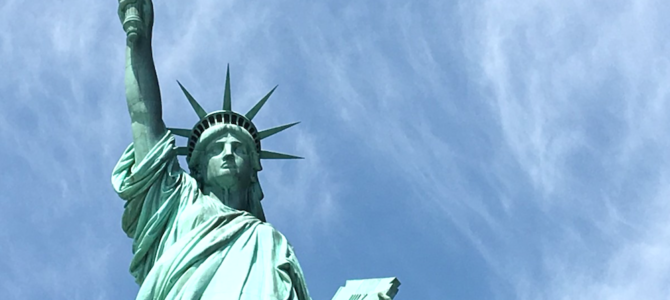
There are certain common perceptions in talk of a “liberal order” that is disputed as being mythical, in the masterful new book by Professor Patrick Porter, The False Promise of Liberal Order: Nostalgia, Delusion and the Rise of Trump. The book is the culmination of an argument, first elaborated in Porter’s 2018 monograph for the Cato Institute, that the idea of a single liberal order since 1945 (or 1989, depending on which liberal you ask) is a quasi-mythical idea, not based on reality. In fact, this almost theological faith essentially misunderstood global great power politics, resulted in imperial overstretch, and is the prime reason behind the global nationalist backlash observable since 2016.
Both foreign policy realists (classical/conservative and structural/neo) as well as foreign policy liberals/neoconservatives (institutionalists and interventionists) base their theories on the fundamental assumption that the world order is anarchic, in the sense that there’s no global policeman as great powers rise and fall and often overstretch themselves to eventual collapse or bankruptcy.
“Orders are hierarchies created by the strong to keep the peace on their terms. There have been many orders: Roman, Byzantine, Imperial Chinese, Ottoman, Mughal, Spanish, French and British,” Porter writes. But that’s where the similarities end.
One Order Is Not Like the Another
As realists of all shades believe that history is cyclical and cultures and regions and interests differ, global great powers must, therefore, act cautiously and not try and make every conflict everywhere existential. That would result in either solvency or perpetual war or both. Liberals and neoconservatives, however, believe, like Trotskyists, that history is directional and bends towards progress, and therefore it is always the job to order the world with that aim in mind. How to do it?
Liberals would prefer interventions to defend human rights, and global institutions curtailing the power of nation-states. Neoconservatives would prefer the same, but to spread democracy. Compared to realists, both these ideas oppose restraint and balance of power. Ordering, therefore, is inherently imperial in nature, even when the ordering is not done by a typical empire. After all, people forget that colonial France was not an empire like the British, but a republic.
All orders are not the same, either. A British order in the 19th century or a current American order is inherently better than the former Japanese, Nazi, Soviet, or future Chinese or Indian order. However, “even the most well-intended, benign project to order the planet will appear hostile and threatening to rivals and potential adversaries.” That results in some contradictions.
Liberalism, and the commitment to continue this liberal order, is therefore a turn to “a revolutionary commitment to democratic expansion, or a system of global governance…liberal expansion is a missionary project that looks to extirpate rival alternatives.” While classically, “Liberalism in any form is supposed to value openness, pluralism and a sense of fallibility…married to the capabilities of a superpower, it readily becomes a dogma that is jealous, messianic and intolerant, leading to its own illiberal opposite.”
This do-gooderism also leads to permanent belligerence, permanent war, and permanent policing missions, and brings forth the contradictions within a liberal worldview, “between law and justice, sovereignty and human rights, free trade, and workers’ protection.”
Two Sides of the Same Coin
That’s all good as far as theory goes. But what does that mean in real life? Well, to put it simply, this concept of the liberal order is used by a bipartisan group of internationalist ideologues to push through a primacist agenda. That has taken its toll and resulted in a backlash.
As hegemony is unsustainable for any great power forever due to structural forces like spread or theft of technology, changes in aggregate military and economic power, financial collapse due to military overstretch, war-fatigue, free-riding of allies, ad the rise of rival great powers, the American republic is now facing what the British empire faced in the 1890s: a massive global geopolitical change, with a population tired of their relentless imperial burden.
For example, trillions of dollars were wasted to stabilize Iraq, Libya, and Afghanistan. Billions more were spent funding proxy wars and rebels in Syria and Ukraine. It is important to remember in this context that Washington DC establishment has been ruled by a duopoly of liberal interventionists and neoconservatives, with foreign policy realists out of the levers of power since the time of Bill Clinton.
Naturally, all these foreign policy fiascos were decided by either liberals and neoconservatives and supported by similar liberals in media and think-tanks, and from North Atlantic Treaty Organization expansion to European Union institutionalization, to helping China into the World Trade Organization, to all the futile wars and interventions in the last two decades. Almost all of these moves were opposed by classical foreign policy realists, from the father of Soviet containment George Kennan, to modern academic theorists like Barry Posen and John Mearsheimer.
“The military adventures since 2001 were ‘credit card’ wars, financed by borrowing rather than by taxes, and fought by a volunteer military,” Porter writes. “This financing helped to secure political acquiescence by shifting immediate burdens away from most citizens.”
This book is a treasure trove of such incredible alignment of liberals and neoconservatives, from Samantha Power to Madeline Albright, Hillary Clinton to Anne Applebaum, Robert Kagan to Bill Kristol, and so forth. The inevitable happened. When there’s not a hair of difference between the ruling section in both major parties, outsiders look extremely attractive.
Accordingly, one of the most powerful speeches from 2016 was by Donald Trump during the South Carolina primary when he mentioned that all the wars from Iraq to Libya were mistakes, going against his own party establishment. So, Porter says, Trump is a symptom of the failure of the liberal dogma and not a cause of global disintegration.
Put it another way, the gap was open for Trump to take over, and if it wasn’t Trump, it would have been someone else. “His rise is partly to do with America’s two decades of war, and the interrelationship between war and the body politic,” he writes.
Resurrecting Realism
While not directly within the scope of the book, Porter dedicates a portion to future American grand strategy, which will require a harkening back to classical Anglo-American statecraft, from Palmerston’s “no eternal allies, no perpetual adversaries,” to Washington’s no “entangling alliances,” to John Quincy Adam’s warning against “going abroad in search of monsters to destroy.”
In practical terms, it would require a radical reshaping of priorities of theatres that are existential for America, like the Western Hemisphere, Western Europe, and the Asia Pacific, and ignoring other regions of the world, where U.S. interests are peripheral. It would also entail no new utopian misadventures of nation-building, a conserving of resources, a classical Nixonian realpolitik based on balance of powers and spheres of influences, and a retrenchment from toxic quagmires and never-ending wars and global policing missions.
And it would require a steady eye on the rise of China and the facilitation of alliances in Asia. For example, he suggests, “to assist a distancing between Russia and China, to concentrate effort and to stabilize the East European theatre, the USA will need to do something that liberal order orthodoxy would preclude: attempt a settlement with Russia with significant mutual concessions, including sacrificing the interests of non-NATO countries on its eastern flank.” This is a brilliant classical balance of power move, in a reverse-Kissingerian way.
But one can never be too optimistic that this might happen. There are various lobby groups and ideological media and academic echo-chambers dedicated to the perpetuation of the liberal dream. My gripe with the book is regarding this underexplored part. It is not that there is a lack of foreign policy realists, libertarians, and paleoconservatives who desire fewer foreign misadventures and classical realpolitik. They are, however, losing the battle of ideas with these entrenched ideologues in media and academia.
Just like Marxism, liberalism is a revolutionary idea and traces its roots to the same borderless, stateless, genderless flattening instincts of the Enlightenment and French Revolution. Kant, Rousseau, and Marx are very similar that way. It also, just like Marxism, has a cult of fanatical believers in the levers of power who would adopt any measure to keep and maintain their power, and use any rhetorical tool from threat inflation to appeals to emotions.
Talk to any university student of foreign policy, diplomacy, and statecraft, and see what most are being taught. Talk to any foreign affairs journalist reporting about “dead babies in Idlib” and see what he or she will suggest as a course of action. Survey the foreign policy columnists in major media publications and count on one hand how many believe in amoral “divide and rule” and spheres of influences.
How to break this informational and ideological monopoly and preach classical realpolitik? To paraphrase Hans Morgenthau, a great power’s grand strategy is incompatible with overemotional and easily swayed public opinion. Realist statecraft eventually becomes impossible. Perhaps conservative-realists should now also focus on the power-play within the academy, and form a bench of policy-trained students, ready for the moment when it inevitably comes calling.









